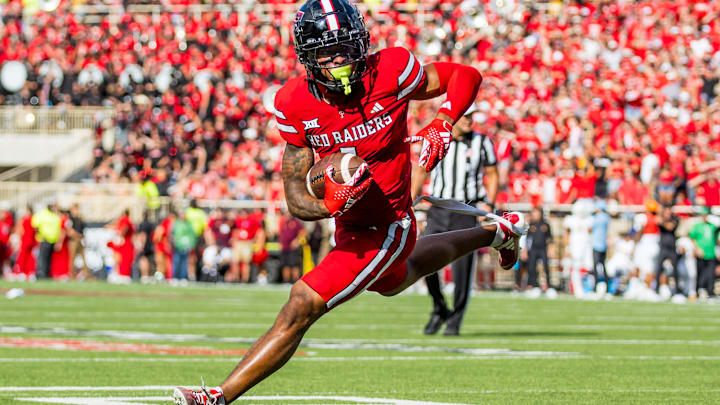The Micah Hudson era of Texas Tech football is over. After an inglorious run in Lubbock that saw the former five-star high school signee catch eight passes for 123 yards and no touchdowns, the sophomore-to-be has announced his intention to transfer to Texas A&M.
On the surface, that's not great news for Texas Tech. While losing Hudson the player is no big deal, seeing the highest-ranked recruit in your program's history walk out the door to join a hated in-state program is bad for perception. That's because this transfer is only going to fuel the comments from uninformed fans and pundits that Texas Tech isn't a desirable destination for blue-chip prospects.
The reality, though, is that Tech will be fine without Hudson. What's more, his decision to leave Texas Tech for A&M is puzzling in that it makes little sense from a football perspective.
Sure, other factors certainly played a role in this decision. In the modern age of N.I.L. payments and revenue sharing, we can be assured that any player who makes a move to a new program will have done so in large part because of financial considerations.
However, Hudson might not like the reality of playing wide receiver at Texas A&M. That's because that isn't a program known in recent years for being a pass catcher's paradise.
This year, Texas A&M's primary quarterback, Marcel Reed, threw for only 1,572 yards and 12 touchdowns in 10 games. What's more, in five games, he led the Aggies in passing despite throwing for less than 200 yards. Additionally, he had no 300-yard passing day this season.
On the other hand, Tech's starting QB, Behren Morton, threw for 3,335 yards and 27 touchdowns in 12 games despite playing through a shoulder injury so severe that it required offseason surgery. Morton had four games of at least 300 yards and no games in which he threw for fewer than 200.
That was despite playing QB next to a 1,500-yard rusher in Tahj Brooks who carried the ball 286 times in 11 games played in the regular season. In other words, even when playing next to one of the nation's best running backs, Morton was a far more productive passer than Reed.
With both Morton and Reed set to return to lead their respective programs in 2025, it is hard to understand why Hudson would prefer to play for A&M's quarterback. What's more, the A&M program is built around defense and running the ball, not throwing the rock to its playmakers on the outside.
This year, A&M's top receiver, Noah Thomas, caught only 34 passes for 545 yards. Meanwhile, Tech's top receiver, Josh Kelly, hauled in 89 passes for 1,023 yards. And to take it a step further, Tech's second-leading receiver, Caleb Douglas, caught 55 passes for 762 yards.
Of course, Tech's offensive coordinator in 2024, Zach Kittley, has left to become the head coach at Florida Atlantic. However, new Texas Tech O.C. Mack Leftwich had three receivers at Texas State top 600 yards in receiving this year, numbers that no Aggie receiver could top this fall.
In fact, no Texas A&M receiver has had a 1,000-yard season since Josh Reynolds in 2016. That likely won't change in 2025 given the system the Aggies run.
With the run-first Reed at the helm, A&M ran the ball 41.3 times per game in 2024 while throwing it only 26.6 times per game. If that ratio holds true in 2025, there may not be as many passes headed Hudson's way as he likely assumes there will be.
Ultimately, we don't know what type of player Hudson would have become in Lubbock or what he will prove to be in College Station. He has the physical gifts to be great but the ditches are lined with the careers of players who had all the talent in the world but never put it all together for one reason or another.
Some may say that these thoughts on Hudson are just sour grapes given that he's decided to leave Texas Tech after just one year. But the reality is that most keen football observers have to realize that the player he has proven to be thus far in his brief career is simply not a player worth losing sleep over.
Had he gone to a place known for producing high-powered offenses such as Ohio State, Oregon, or even Texas, it would have been easy to understand. But for a wide receiver who considers himself to be elite to want to play in Texas A&M's offense is puzzling.
Again, other factors certainly played a role in Hudson's choice as in the modern age of college football player movement, football has become a secondary consideration to money and off-the-field perks.
Regardless, Hudson's move might not prove to be a jump to greener pastures, at least on the pasture that counts, the football field. It appears, though, that the green that matters most to him isn't the gridiron but rather what lines his pocket.
